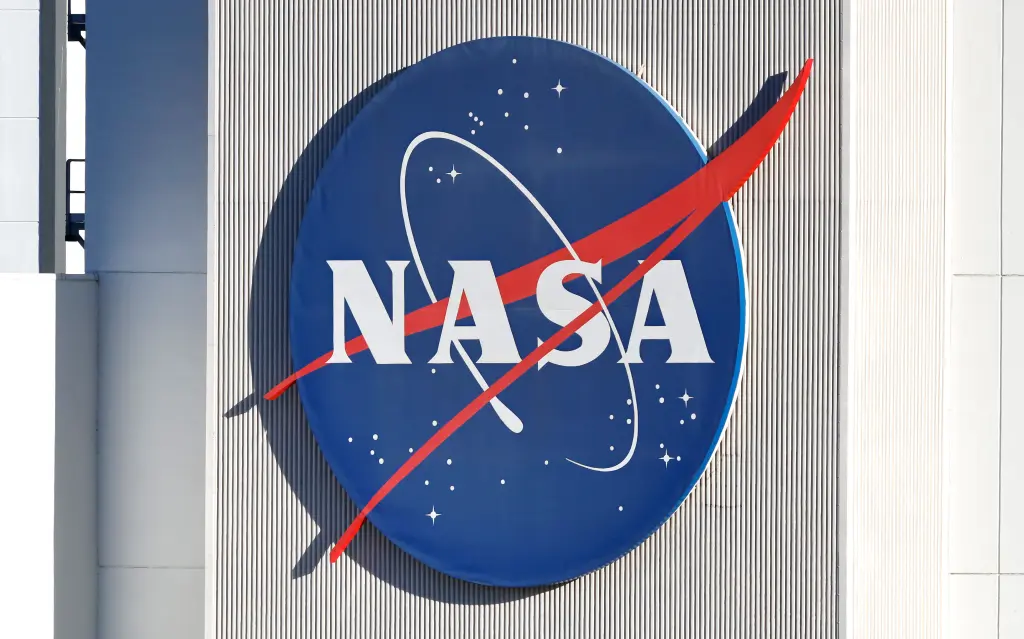Congresswoman Anna Paulina Luna Demands NASA Release Unseen Images of 3I/ATLAS as the Mysterious Manhattan-Sized Comet Changes Color for the Third Time
The debate over transparency in space exploration reached new heights this week as U.S. Congresswoman Anna Paulina Luna called on NASA to release unreleased data and images of comet 3I/ATLAS, a mysterious celestial object that has now changed color for the third time since its discovery. The 36-year-old Florida representative issued a formal letter to acting NASA administrator Sean Duffy, expressing growing public concern and curiosity about the object’s unusual behavior and what it could mean for our understanding of interstellar phenomena.

“Taxpayers fund NASA,” Luna wrote in her public post on X, formerly known as Twitter. “It’s only fair that the public has access to the full imagery and data surrounding such a unique object. We deserve transparency — not secrecy — especially when it involves discoveries of cosmic importance.”
Her message immediately drew national attention, sparking both scientific intrigue and political debate. For months, amateur astronomers and professional astrophysicists alike have been closely tracking 3I/ATLAS, a massive comet roughly the size of Manhattan that entered the solar system in late 2024. What sets this comet apart from others isn’t just its scale — it’s the fact that it’s interstellar, meaning it came from beyond our solar system. And now, with its color shifting from green to bluish-white, then to yellow, and back again, many are wondering what exactly is going on with this wandering visitor.
According to NASA’s preliminary findings, 3I/ATLAS — named after the Asteroid Terrestrial-impact Last Alert System that first detected it — exhibits characteristics unlike any other interstellar object previously observed, including the famous 2017 discovery of 1I/‘Oumuamua. While scientists initially believed 3I/ATLAS to be a simple frozen rock composed of dust and ice, newer spectral data suggests something more complex. Its core appears to react to sunlight in unpredictable ways, and the rapid shifts in color have puzzled researchers.
In her letter, Rep. Luna emphasized that withholding such data only fuels public suspicion. “When agencies conceal information, even temporarily, it undermines trust in science and government,” she wrote. “I urge NASA to immediately declassify and release all photographic and spectroscopic materials related to 3I/ATLAS for independent review.”

NASA, for its part, has maintained that the unreleased images are still under calibration and analysis. Agency spokesperson James Hobbs said in a statement Wednesday that the photographs “require additional spectral correction before they can be accurately interpreted.” He added that NASA’s priority is ensuring scientific accuracy rather than rushing publication. “We understand the public’s excitement, but premature release could lead to misinformation about what’s actually being observed,” Hobbs said.
Still, many believe the delay is unusual. Typically, NASA shares raw astronomical data through its open-access archives, allowing researchers and the public to interpret findings together. The fact that certain high-resolution images of 3I/ATLAS remain withheld has prompted speculation — some of it grounded in science, and some drifting into conspiracy.
The last official update came in mid-October, when NASA’s Jet Propulsion Laboratory released a brief statement confirming that 3I/ATLAS exhibited an “unexpected optical variance.” In layman’s terms, that means its brightness and coloration have been changing in ways not easily explained by current comet models. The report stopped short of offering an explanation but mentioned “potential interaction with interstellar material or radiation gradients.”
Representative Luna’s decision to intervene has divided opinions. Supporters argue she’s championing scientific transparency, while critics accuse her of politicizing space research for publicity. Still, Luna’s scientific curiosity appears genuine. Before entering politics, she studied biology and environmental science, and she has long been vocal about increasing government accountability in federally funded research. “We have a right to know what’s happening beyond our sky,” she said during a local interview. “Space exploration belongs to humanity — not bureaucracy.”
Her call comes amid a resurgence of public fascination with interstellar objects. After the 2017 discovery of ‘Oumuamua and the 2019 identification of comet 2I/Borisov, 3I/ATLAS represents the third known interstellar visitor ever detected. Each has challenged long-held assumptions about how cosmic debris travels across galaxies. But unlike its predecessors, 3I/ATLAS’s erratic behavior — particularly its shifting colors — is forcing scientists to question their models even further.
Astrophysicist Dr. Helen Rodriguez from Caltech explained in a recent statement that color variations in comets can reveal chemical composition changes, often triggered by solar radiation. “A color shift usually means the comet’s surface or gas emissions are reacting differently as it approaches the sun,” Rodriguez said. “But to see three distinct shifts within such a short period is extraordinary. It could mean 3I/ATLAS contains compounds we’ve never observed before.”
Others have suggested more exotic explanations, ranging from microfractures in the comet’s nucleus to previously unknown energy interactions in interstellar dust. Whatever the cause, 3I/ATLAS is behaving unlike any comet in recorded history.
As debates continue, Luna’s demand has amplified a growing chorus among scientists calling for open data policies. “NASA’s research should be fully transparent,” said Dr. Michael Fahey, a planetary scientist at the University of Colorado. “Withholding key information risks creating misinformation gaps that conspiracy theories will fill. Releasing the images — even with disclaimers — allows independent experts to verify findings.”
Indeed, online speculation about 3I/ATLAS has already taken off. Fringe communities have floated everything from alien technology theories to claims that the comet could pose a hidden collision threat — neither of which have any scientific basis. NASA has repeatedly emphasized that 3I/ATLAS poses no danger to Earth. The comet is expected to pass more than 300 million miles away from the planet, making it entirely harmless.
Still, the idea of a massive interstellar object behaving unpredictably has captured the public imagination. The comet’s latest color shift, observed on July 21, 2025, drew headlines after amateur astronomers shared spectral data showing a vivid transition from a deep azure hue to a pale gold. Social media erupted with images and speculation, prompting renewed interest from mainstream media and — now — political figures.
Rep. Luna’s letter to NASA has already garnered bipartisan attention. While few lawmakers have publicly commented, several have quietly signaled support for broader space data transparency. “If the agency has nothing to hide, it should have no issue releasing the data,” said one congressional aide familiar with the matter.
NASA, however, insists that the process is not political. “Our scientists are working diligently to ensure that every observation is peer-reviewed and verified before publication,” said Hobbs. “The 3I/ATLAS dataset involves highly sensitive optical readings that can easily be misinterpreted. Releasing partial or unprocessed data would be irresponsible.”
Yet as of this week, Luna’s persistence shows no sign of fading. She has reportedly scheduled follow-up discussions with members of the House Science, Space, and Technology Committee to explore potential legislative measures ensuring faster public access to taxpayer-funded research. “Transparency builds trust,” she wrote in a later post. “This isn’t about politics — it’s about science, accountability, and curiosity.”
Outside the political sphere, astronomers continue to monitor 3I/ATLAS through multiple telescopes across the globe, including the Hubble Space Telescope and the European Southern Observatory’s Very Large Telescope in Chile. Preliminary readings suggest that the comet’s tail — or coma — has also brightened, indicating possible sublimation of exotic ices or dust particles.
Dr. Rodriguez believes the key to understanding 3I/ATLAS lies in its origin. “This object didn’t form in our solar system,” she explained. “It’s likely billions of years old, traveling through interstellar space before being pulled toward our sun. The data we gather from it could reshape how we understand cometary evolution across galaxies.”
That scientific promise, Luna argues, makes withholding data even more unjustifiable. “Every piece of information about this comet is a piece of the universe’s story,” she said. “That story should be shared.”
As NASA faces mounting pressure from lawmakers and the public alike, the mystery surrounding 3I/ATLAS continues to deepen. For now, the agency has promised an official update by late November, when new imaging data from the James Webb Space Telescope is expected to be processed. Whether those images will finally be released in full remains to be seen.
For Luna, and for many who believe in open science, the question goes beyond one comet. It’s about the relationship between public institutions and the people they serve — and the belief that the wonders of the cosmos belong to everyone. As she put it in her final statement, “The stars don’t keep secrets. Neither should we.”


